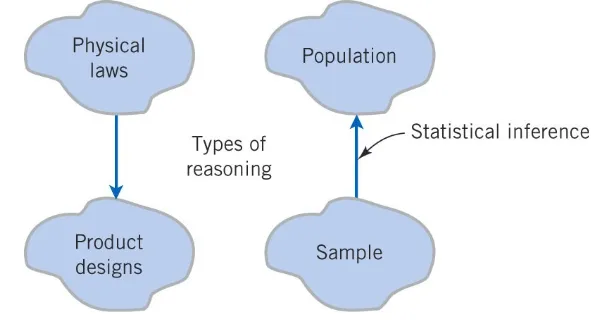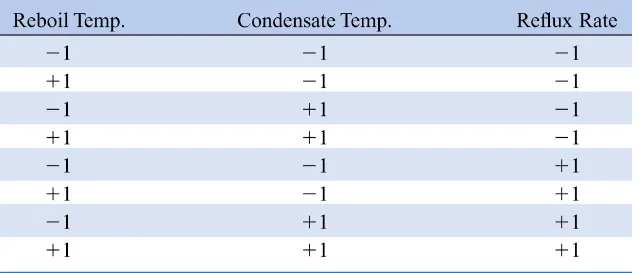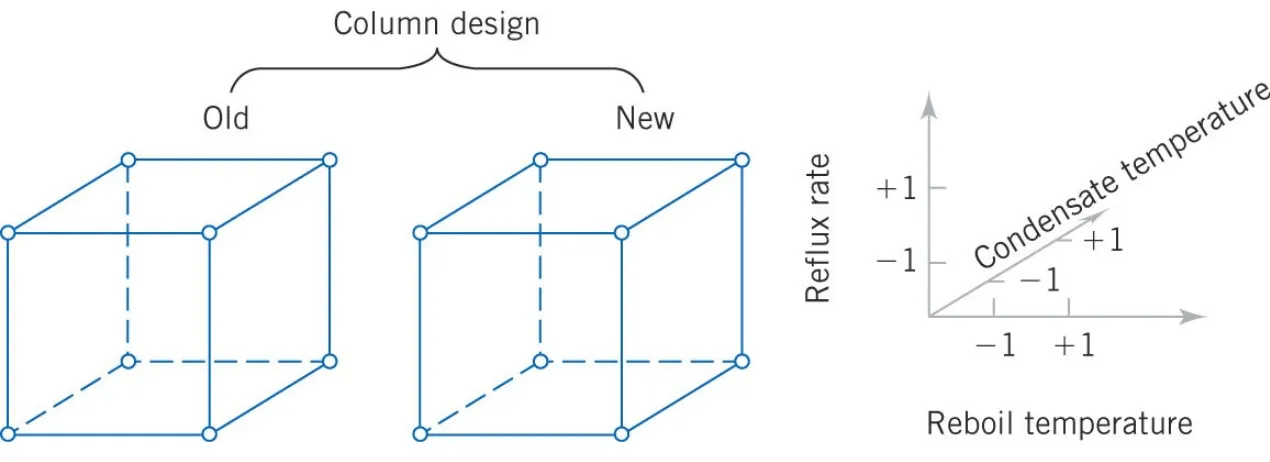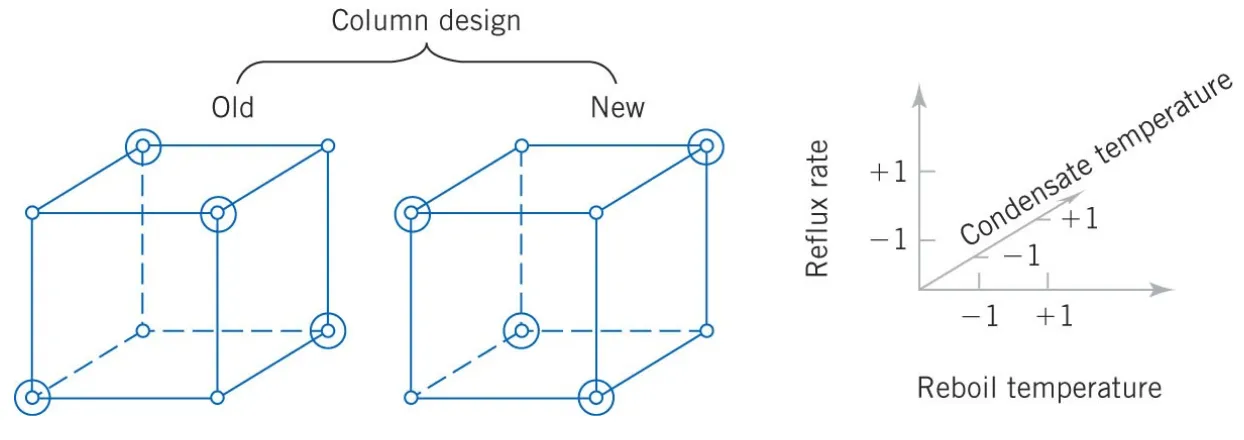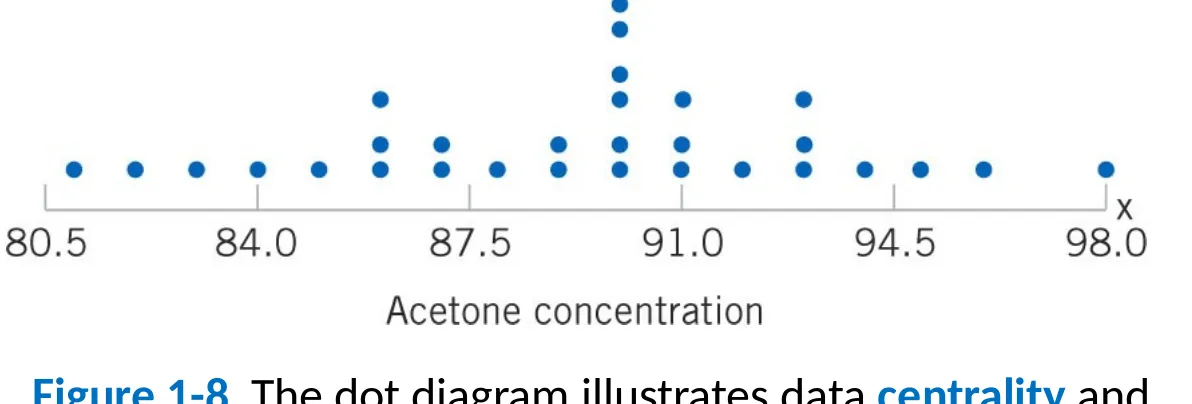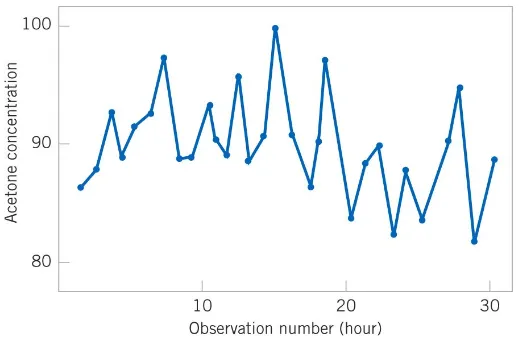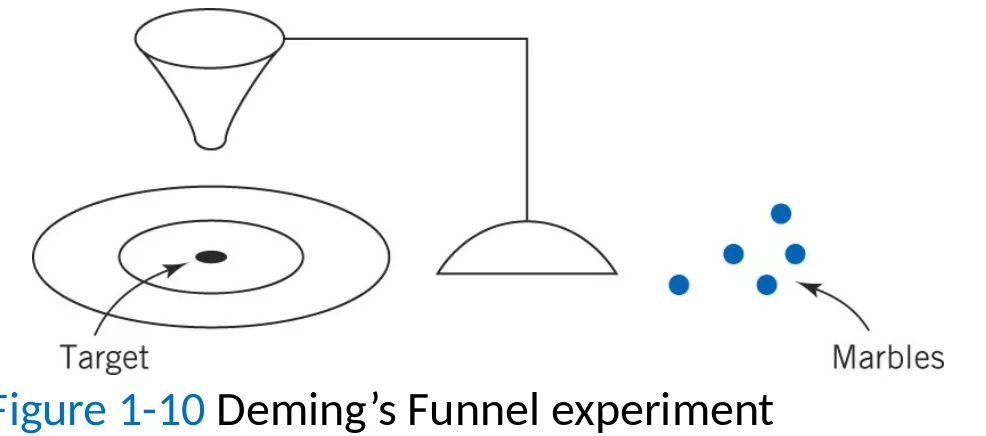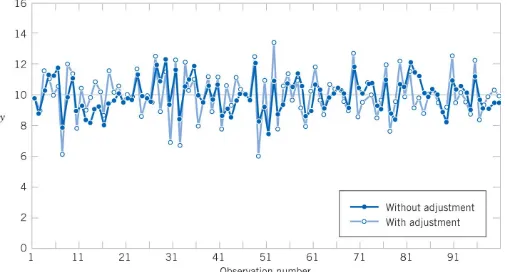1
1
The Role of Statistics
in Physics Education
1-1 The Physics Education Method and Statistical Thinking 1-2 Collecting Physics Education Data
1-2.1 Basic Principles
1-2.2 Retrospective Study 1-2.3 Observational Study 1-2.4 Designed Experiments
1-2.5 Observed Processes over Time 1-3 Mechanistic & Empirical Models 1-4 Probability & Probability Models
CHAPTER OUTLINE
2 Chapter 1 Learning Objectives
Learning Objectives for Chapter 1
After careful study of this chapter, you should be able to do the following:
1. Identify the role that statistics can play in the Physics Education problem-solving process.
2. Discuss how variability affects the data collected and used for Physics Education decisions.
3. Explain the difference between enumerative and analytical studies. 4. Discuss the different methods that Physicians use to collect data.
5. Identify the advantages that designed experiments have in comparison to the other methods of collecting Physics Education data.
6. Explain the differences between mechanistic models & empirical models. 7. Discuss how probability and probability models are used in Physics
An Physicians is someone who solves problems of
interest to society with the efficient application of
scientific principles by:
•
Refining existing products
•
Designing new products or processes
What Do Physicians Do?
The Creative Process
Figure 1.1 The Physics Education method
The field of statistics deals with the collection,
presentation, analysis, and use of data to:
•
Make decisions
•
Solve problems
•
Design products and processes
It is the science of learning information from data.
Statistics Supports The Creative Process
•
Statistical techniques are useful for describing and
understanding variability.
•
By variability, we mean successive observations of a
system or phenomenon do
not
produce exactly the
same result.
•
Statistics gives us a framework for describing this
variability and for learning about potential sources of
variability.
Experiments & Processes Are Not
Deterministic
An Physicians is designing a nylon connector to be used in an automotive engine application. The Physicians is considering establishing the design specification on wall thickness at 3/32 inch, but is somewhat uncertain about the effect of this decision on the connector pull-off force. If the pull-off force is too low, the connector may fail when it is installed in an engine. Eight
prototype units are produced and their pull-off forces measured (in pounds):
12.6, 12.9, 13.4, 12.3, 13.6, 13.5, 12.6, 13.1.
An Physics Education Example of
Variability-1
•
The dot diagram is a very useful plot for displaying a smallbody of data - say up to about 20 observations.
• This plot allows us to see easily two features of the data; the
location, or the middle, and the scatter or variability.
A Physics Education Example of
Variability-2
8 1-1 The Physics Education Method & Statistical Thinking
•
The Physicians considers an alternate design and eightprototypes are built and pull-off force measured.
• The dot diagram can be used to compare two sets of data.
Figure 1-3 Dot diagram of pull-off force for two wall thicknesses
.
A Physics Education Example of
Variability-3
•
Since pull-off force varies or exhibits variability, it is a
random variable
.
•
A random variable,
X
, can be modeled by:
X
=
+
(1-1)
where
is a constant and
is a random disturbance.
A Physics Education Example of
Variability-4
Two Directions of Reasoning
11 1-1 The Physics Education Method & Statistical Thinking
Three basic methods for collecting data:
–
A retrospective study using historical data
• Data collected in the past for other purposes.–
An observational
study
• Data, presently collected, by a passive observer.
–
A designed experiment
• Data collected in response to process input changes.
Basic Types of Studies
Hypothesis Tests
13
Hypothesis Test
•
A statement about a process behavior value.• Compared to a claim about another process value. • Data is gathered to support or refute the claim.
One-sample hypothesis test:
•
Example: Ford avg mpg = 30 vs. avg mpg < 30Two-sample hypothesis test:
•
Example: Ford avg mpg – Chevy avg mpg = 0 vs. > 0.Factor Experiment Example-1
14
Consider a petroleum distillation column:
•
Output is acetone concentration• Inputs (factors) are:
1. Reboil temperature
2. Condensate temperature 3. Reflux rate
• Output changes as the inputs are changed by experimenter. • Each factor is set at 2 reasonable levels (-1 and +1)
• 8 (23) runs are made, at every combination of factors, to
observe acetone output.
• Resultant data is used to create a mathematical model of
the process representing cause and effect.
Factor Experiment Example-2
15 1-2.4 Designed Experiments
Factor Experiment Example-3
Figure 1-5 The factorial experiment for the distillation column.
Factor Experiment Example-4
17
Now consider a new design of the distillation column:
• Repeat the settings for the new design, obtaining 8 more
data observations of acetone concentration.
• Resultant data is used to create a mathematical model of
the process representing cause and effect of the new process.
• The response of the old and new designs can now be
compared.
• The most desirable process and its settings are selected as
optimal.
Factor Experiment Example-5
Figure 1-6 A four-factorial experiment for the distillation column 24 = 16 settings.
Factor Experiment Considerations
19
•
Factor experiments can get too large. For example, 8
factors will require 2
8= 256 experimental runs of the
distillation column.
•
Certain combinations of factor levels can be deleted
from the experiments without degrading the resultant
model.
•
The result is called a fractional factorial experiment.
Factor Experiment Example-6
Figure 1-7 A fractional factorial experiment for the distillation column (one-half fraction) 24 / 2 = 8 circled settings.
Distribution of 30 Distillation Column Runs
Whenever data are collected over time, it is important to plot the data over time. Phenomena that might affect the system or process often become more visible in a time-oriented plot
and the concept of stability can be better judged.
Figure 1-8 The dot diagram illustrates data centrality and
variation, but does not identify any time-oriented problem.
30 Observations, Time Oriented
Figure 1-9 A time series plot of concentration provides more information than a dot diagram – shows a developing trend.
23
An Experiment in Variation
W. Edwards Deming, a famous industrial statistician &
contributor to the Japanese quality revolution,
conducted a illustrative experiment on process
over-control or tampering.
Let’s look at his apparatus and experimental procedure.
1-2.5 Observing Processes Over Time 24
Deming’s Experimental Set-up
Marbles were dropped through a funnel onto a target and the location where the marble struck the target was recorded.
Variation was caused by several factors:
Marble placement in funnel & release dynamics, vibration, air currents, measurement errors.
Deming’s Experimental Procedure
•
The funnel was aligned with the center of the
target. Marbles were dropped. The distance from
the strike point to the target center was measured
and recorded
•
Strategy 1: The funnel was not moved. Then the
process was repeated.
•
Strategy 2: The funnel was moved an equal
distance in the opposite direction to compensate
for the error. Then the process was repeated.
Adjustments Increased Variability
Figure 1-11 Adjustments applied to random disturbances
over-controlled the process and increased the deviations from the target.
27
Conclusions from the Deming Experiment
The lesson of the Deming experiment is that a process
should not be adjusted in response to random
variation, but only when a clear shift in the process
value becomes apparent.
Then a process adjustment should be made to return
the process outputs to their normal values.
To identify when the shift occurs, a control chart is
used. Output values, plotted over time along with the
outer limits of normal variation, pinpoint when the
Detecting & Correcting the Process
Figure 1-12 Process mean shift is detected at observation #57, and an adjustment (a decrease of two units) reduces the deviations from target.
How Is the Change Detected?
•
A control chart is used. Its characteristics are:
– Time-oriented horizontal axis, e.g., hours.– Variable-of-interest vertical axis, e.g., % acetone.
•
Long-term average is plotted as the center-line.
•
Long-term usual variability is plotted as an upper and
lower control limit around the long-term average.
•
A sample of size n is taken hourly and the averages
are plotted over time. If the plot points are between
the control limits, then the process is normal; if not, it
needs to be adjusted.
How Is the Change Detected Graphically
?
Figure 1-13 A control chart for the chemical process concentration data. Process steps out at hour 24 &29. Shut down & adjust process.
31
Use of Control Charts
Deming contrasted two purposes of control charts:
1. Enumerative studies: Control chart of past
production lots. Used for lot-by-lot acceptance
sampling.
2. Analytic studies: Real-time control of a production
process.
Visualizing Two Control Chart Uses
Figure 1-14 Enumerative versus analytic study.
Understanding Mechanistic & Empirical Models
•
A mechanistic model is built from our underlying
knowledge of the basic physical mechanism that
relates several variables.
Example: Ohm’s Law
Current = voltage/resistance
I
=
E/R
I
=
E/R +
•
The form of the function is known.
Mechanistic and Empirical Models
An empirical model is built from our Physics Education
and scientific knowledge of the phenomenon, but is not
directly developed from our theoretical or
first-principles understanding of the underlying mechanism.
The form of the function is not known
a priori
.
An Example of an Empirical Model
• We are interested in the numeric average molecular weight (Mn)
of a polymer. Now we know that Mn is related to the viscosity of the material (V), and it also depends on the amount of catalyst (C) and the temperature (T ) in the polymerization reactor when the material is manufactured. The relationship between Mn and these variables is
M
n=
f
(
V
,
C
,
T
)
say, where the form of the function f is unknown.
• We estimate the model from experimental data to be of the
following form where the b’s are unknown parameters.
Another Example of an Empirical Model
•
In a semiconductor manufacturing plant, the finished
semiconductor is wire-bonded to a frame. In an
observational study, the variables recorded were:
• Pull strength to break the bond (y) • Wire length (x1)
• Die height (x2)
•
The data recorded are shown on the next slide.
37 1-3 Mechanistic & Empirical Models
Empirical Model That Was Developed
In general, this type of empirical model is called a
regression model
.
The estimated regression relationship is given by:
Figure 1-15 Three-dimensional plot of the pull strength (y), wire length (x1) and die height (x2) data.
39
Visualizing the Data
Figure 1-16 Plot of the predicted values (a plane) of pull strength from the empirical regression model.
40
Visualizing the Resultant Model Using Regression Analysis
Models Can Also Reflect Uncertainty
•
Probability models
help quantify the risks
involved in statistical inference, that is, risks
involved in decisions made every day.
•
Probability provides the
framework
for the
study and application of statistics.
•
Probability concepts will be introduced in
the next lecture.
42
Important Terms & Concepts of Chapter 1
Chapter 1 Summary
© John Wiley & Sons, Inc. Applied Statistics and Probability for Physicians, by Montgomery and Runger.
Analytic study Cause and effect
Designed experiment Empirical model
Physics Education method Enumerative study
Factorial experiment
Fractional factorial experiment Hypothesis testing Interaction Mechanistic model Observational study Overcontrol Population Probability model Problem-solving method Randomization Retrospective study Sample Statistical inference
Statistical process control Statistical thinking

